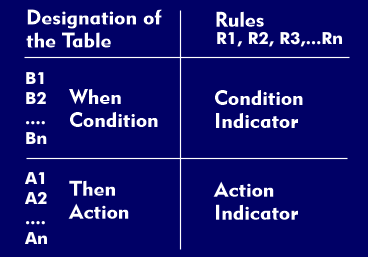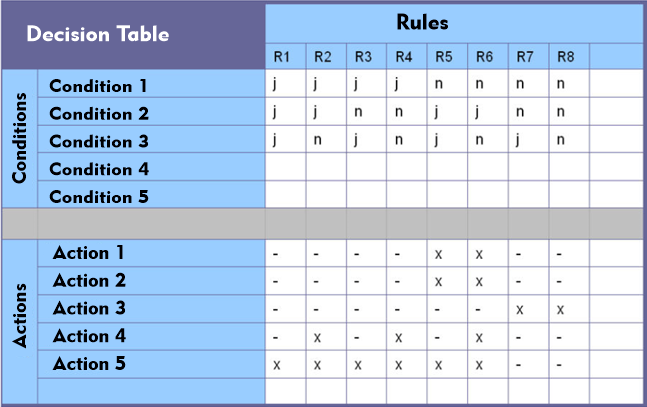decision table
Decision tables define a formal procedure for the compact linking of actions with their preconditions. The methodology was developed as early as 1957 by the General Electric Company in the USA as part of a material flow project and is now standardized according to DIN 66241. The technique is used wherever purely verbal descriptions of a system are too imprecise, often incomplete and ambiguous, and not always free of contradictions. For example, decision tables are used in modeling and simulation, in the design of software systems or in connection with programmable logic controllers(PLCs).
The basic idea is to regard every action or sequence of actions as the result of a decision made on the basis of certain conditions. The system behavior is thus described by a set of if-then relations - so-called decision rules. Each decision rule specifies which condition - which conjunction of conditions - must be met in order to trigger a precisely defined action or sequence of actions.
The structure of decision tables
In its basic form, the structure of a decision table consists of four quadrants. The condition part of a decision table describes all conditions that are essential for a decision. The action part describes all operations to be performed under the various conditions. The right part of a decision table consists of a series of columns called rules. Each rule, in turn, consists of a condition indicator part, by which the particular constellation of conditions of a case (conjunction of the marked conditions) is described, and an action indicator part, which specifies which actions are to be performed. The bounded decision table represents the basic form of a decision table. The term refers to the fact that only the symbols "Y", "N" are allowed as condition pointers, and only the symbols "X" and "-" (as irrelevance pointers) are allowed as action pointers. This is called limited symbolism.
The extended decision table can be derived from this basic form. In this type of display, the number of indicator shapes can be increased by including parts of the conditions or actions themselves in the indicator part, which corresponds to the extended symbolism. The conditions used to trigger actions can then usually take more than two states.
When limited and extended symbolism are used together for the indicator forms in a decision table, it is called a mixed decision table.
The power of this methodology is in clarifying redundancies and inconsistencies in system analysis, and in checking for completeness in decisions to be made. The decision table is complete if all possible combinations of conditions are considered. A contradiction is always present if the same condition combinations occur in different rules, but different actions are to be performed.


